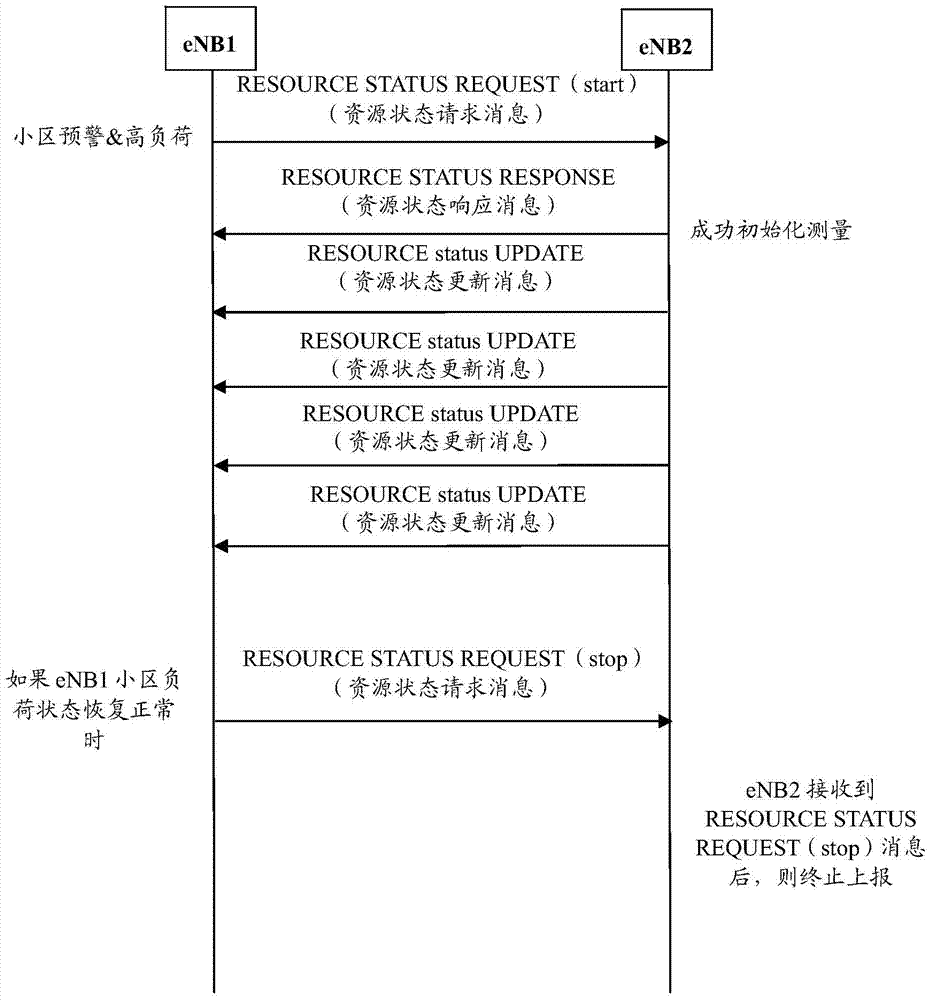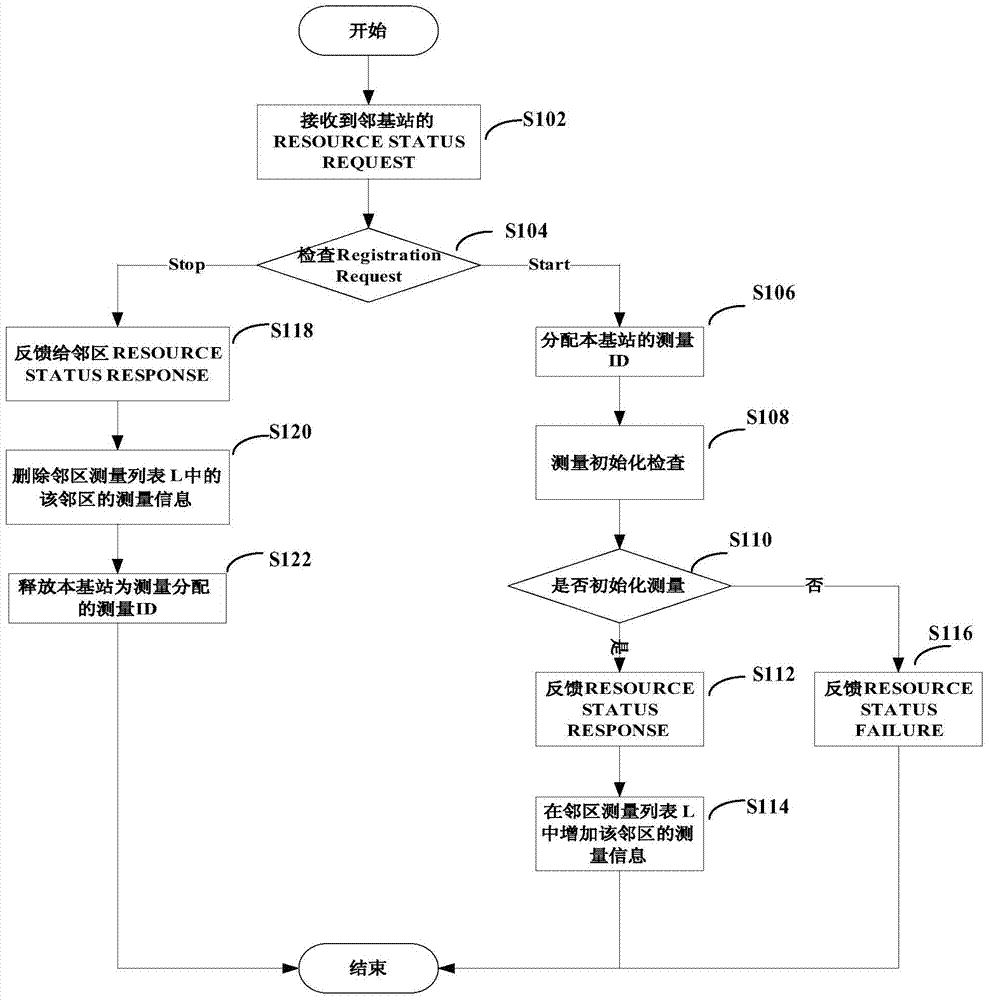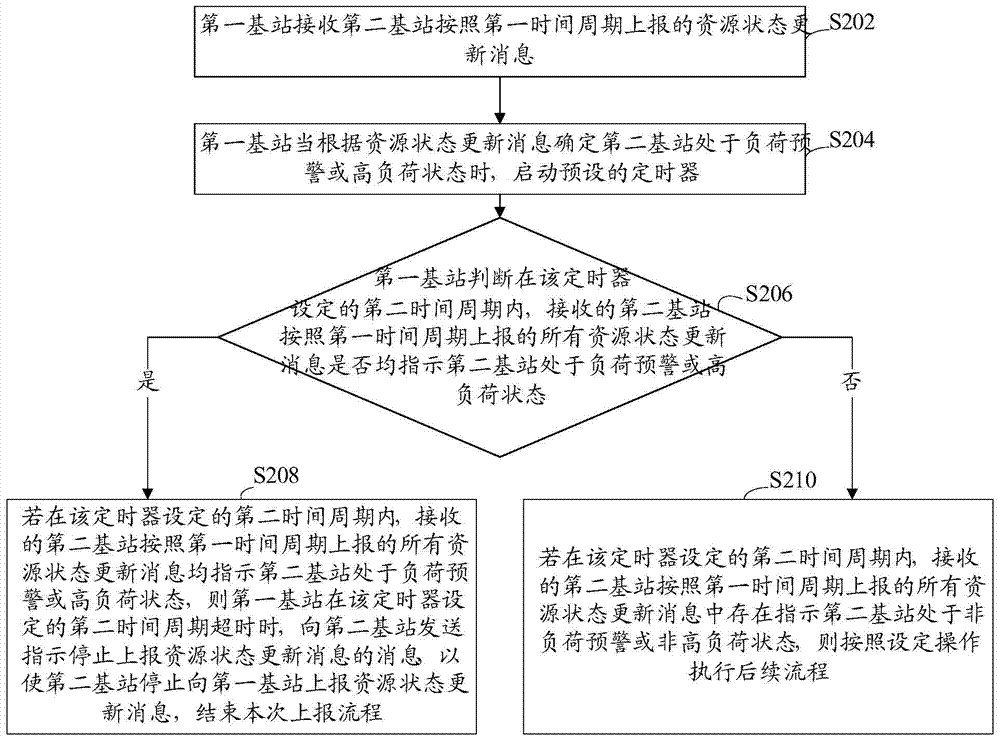Base station load information interaction method and base station
A base station and load technology, applied in the field of communication, can solve the problems of waste of X2 link resources, affecting the normal transmission of signaling, redundant signaling interaction, etc., to reduce the impact, solve the waste of X2 link resources, and optimize the processing flow. Effect
- Summary
- Abstract
- Description
- Claims
- Application Information
AI Technical Summary
Problems solved by technology
Method used
Image
Examples
Embodiment 1
[0030] refer to image 3 , shows a flow chart of steps of a method for exchanging load information of base stations according to Embodiment 1 of the present invention.
[0031] The base station load information interaction method in this embodiment includes the following steps:
[0032] Step S202: the first base station receives the resource status update message reported by the second base station according to the first time period.
[0033] When the base station needs to implement load balancing due to the lack of its own resources, the load information of the base station can be transmitted between the base stations through the X2 interface. For example, the first base station sends a Resource Status Request message to the second base station, requesting the second base station to report Resource status information, which includes the resource content that the second base station needs to report, such as radio resource status (Radio Resource Status), S1 interface transmiss...
Embodiment 2
[0044] refer to Figure 4 , shows a signaling interaction diagram of base station load information interaction according to Embodiment 2 of the present invention.
[0045] In this embodiment, the first base station is represented by eNB1, and the second base station is represented by eNB2. A timer t3 is added to eNB1, and the information carried in the RESOURCE STATUS UPDATE (resource status update) message reported by eNB2 by t3 satisfies one of the following conditions One, then eNB1 starts timer t3:
[0046] (1) radio resource usage (wireless resource usage) (can be UL / DL GBR PRB usage (uplink / downlink guaranteed bit rate physical resource block usage), or UL / DL non-GBR PRB usage (uplink / downlink non-guaranteed Bit rate physical resource block usage), or UL / DL total PRB usage (uplink / downlink total physical resource block usage)), that is, UL / DL PRB usage (uplink / downlink physical resource block usage) exceeds this area (ie eNB1) The preset threshold for judging the overl...
Embodiment 3
[0095] refer to Figure 5 , shows a flow chart of steps of a method for exchanging load information of base stations according to Embodiment 3 of the present invention.
[0096] In this embodiment, the first base station is still denoted by eNB1, the second base station is still denoted by eNB2, and the start condition of the timer t3 in eNB1 is still as described in the second embodiment.
[0097] The base station load information interaction method in this embodiment includes the following steps:
[0098] Step S402: eNB1 determines that load balancing needs to be implemented according to its own load status, and sends a Resource Status Request message to eNB2.
[0099] For example, eNB1 detects that the load of the cell reaches or exceeds the set threshold, where the load of the cell can be one or more of radio resources, transport network layer load, hardware load, or comprehensive available capacity group, or it can be a A parameter that generally characterizes the cell ...
PUM
 Login to View More
Login to View More Abstract
Description
Claims
Application Information
 Login to View More
Login to View More - R&D
- Intellectual Property
- Life Sciences
- Materials
- Tech Scout
- Unparalleled Data Quality
- Higher Quality Content
- 60% Fewer Hallucinations
Browse by: Latest US Patents, China's latest patents, Technical Efficacy Thesaurus, Application Domain, Technology Topic, Popular Technical Reports.
© 2025 PatSnap. All rights reserved.Legal|Privacy policy|Modern Slavery Act Transparency Statement|Sitemap|About US| Contact US: help@patsnap.com



